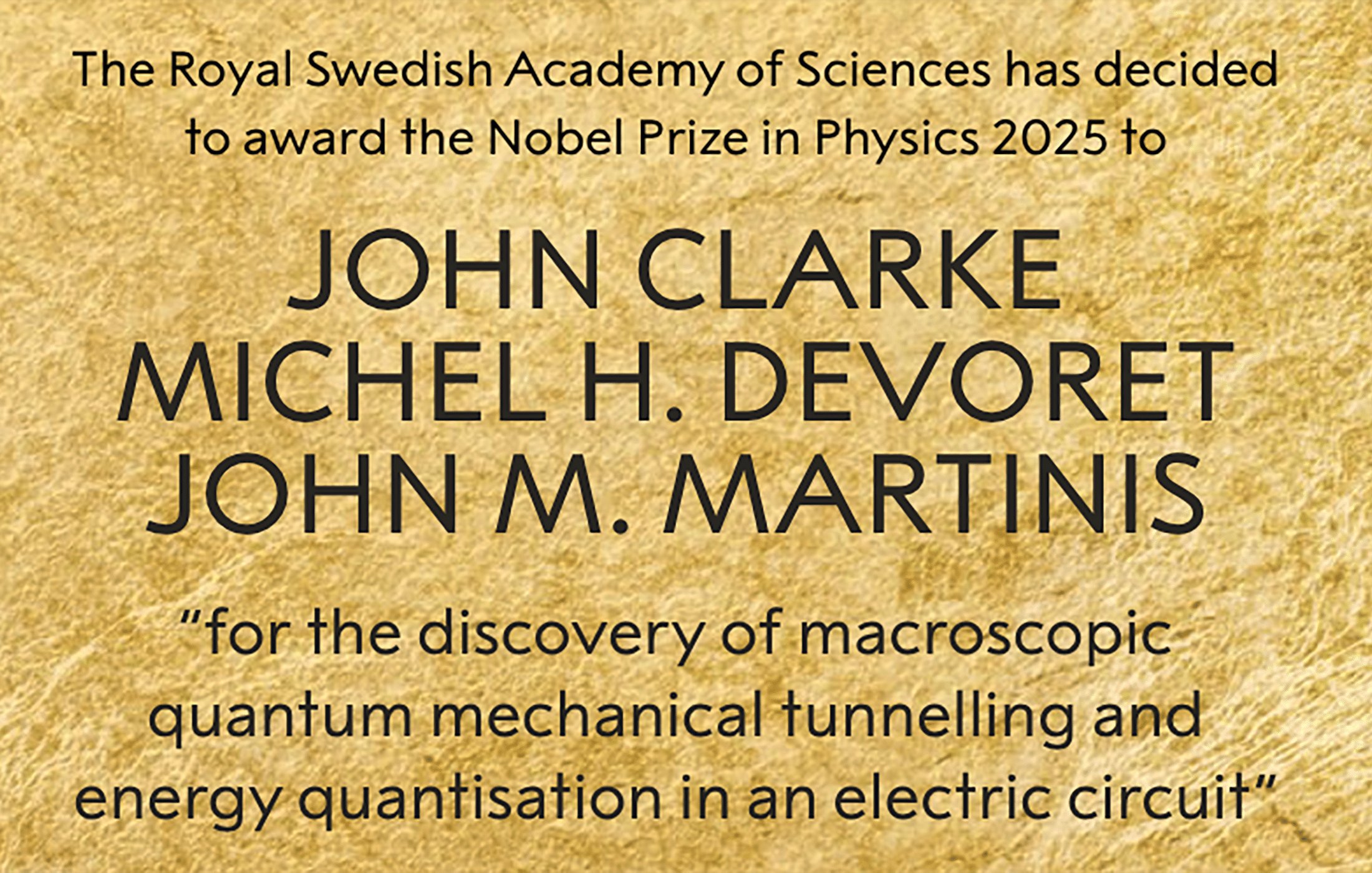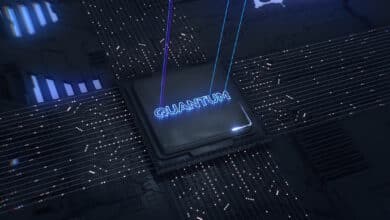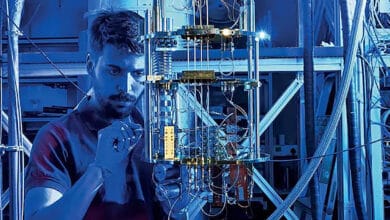Quantum Tunnelling on a Chip: Why the 2025 Nobel Prize in Physics Matters for Quantum Tech

Table of Contents
7 Oct 2025 – The 2025 Nobel Prize in Physics went to John Clarke, Michel Devoret and John Martinis for a deceptively simple yet profound experiment. They built a superconducting circuit – two superconductors separated by an insulating barrier known as a Josephson junction – and showed that a system big enough to hold in your hand can still display the bizarre rules of quantum mechanics. Their chip revealed that a macroscopic current can tunnel through an energy barrier and that the circuit’s energy is quantised; in other words, it can only absorb or emit precise amounts of energy.
This demonstration answers a long‑standing question about whether quantum effects disappear when many particles are involved and lays the groundwork for quantum technologies.
What the laureates discovered
The laureates used a superconducting loop with a Josephson junction. When cooled to near absolute zero, billions of electrons in a superconductor form Cooper pairs that behave coherently. In their circuit the pairs flowed without resistance, but there was a twist: the system became trapped in a zero‑voltage state behind an energy barrier. Classical physics says the current should remain forever trapped, yet the experiment showed it could tunnel through the barrier – a purely quantum process that is analogous to a ball passing through a wall. The tunnelling was detected when a finite voltage suddenly appeared across the junction.
Further measurements revealed that the circuit’s energy levels were discrete. By shining microwaves of different frequencies onto the chip, the researchers could excite the system from its lowest energy state to higher states only when the photon energy matched the gap between these quantised levels. This confirmed that the macroscopic system behaves like a giant artificial atom, absorbing and emitting energy in packets rather than continuously. These experiments, performed in 1984-85, were the first to show that quantum tunnelling and energy quantisation occur in a macroscopic electrical circuit, proving that quantum mechanics does not have a strict size limit.
Why it was significant
- Bridging scales: Previous observations of tunnelling involved individual atoms or electrons. By demonstrating tunnelling in a system containing billions of electrons acting as one, the laureates showed that quantum coherence can persist on macroscopic scales.
- Evidence for artificial atoms: The circuit’s quantised energy spectrum means superconducting circuits can function as artificial atoms with tunable properties. This idea underlies many modern quantum devices.
- Opening a technology frontier: The Nobel Committee noted that these experiments create opportunities for quantum cryptography, quantum computers and quantum sensors. The discovery thus marks a transition from quantum physics as a purely theoretical framework to a toolbox for engineering.
Connection to quantum computing
Superconducting circuits with Josephson junctions form the backbone of several leading quantum‑computer architectures. Because the circuit behaves like an artificial atom, its two lowest energy levels can serve as a qubit – the quantum analogue of a bit.
Early research into phase qubits in the 1980s was motivated by the same question the laureates answered: do macroscopic variables behave quantum mechanically? A review of phase‑qubit development notes that the original experiments verified quantum behaviour by measuring tunnelling out of the zero‑voltage state and observing quantised energy levels. John Martinis later used these quantised states to implement qubits and logical gates, and superconducting qubits now drive much of the progress in quantum computing.
Modern superconducting processors integrate thousands of Josephson junctions and manipulate qubits using microwave pulses. Flux qubits and transmon qubits leverage the same physics: a circulating current or charge is quantised, and quantum information is stored in the relative phase of the Cooper‑pair wave function. We could describe Josephson junctions as the “transistors” of superconductors, that enable superconducting switches that operate at gigahertz frequencies with extremely low energy dissipation and form the core of quantum‑computing chips. These qubits must be shielded from noise and cooled to millikelvin temperatures, but their scalability and compatibility with existing fabrication make them attractive for building large‑scale quantum machines.
Impact on quantum sensing and metrology
Superconducting loops interrupted by Josephson junctions are also the basis of the superconducting quantum interference device (SQUID), the world’s most sensitive magnetometer. SQUIDs explains can detect magnetic fields smaller than 10⁻¹⁵ tesla and convert any measure (pressure, current, or even neural activity) into magnetic flux. John Clarke’s research pioneered low‑noise SQUID amplifiers and applied them to geophysical exploration and medical imaging. The laureates’ demonstration of macroscopic quantum behaviour in Josephson junctions therefore underpins practical quantum sensors, from brain‑imaging MEG systems to nanoscale magnetometers that can detect single electron spins. These devices are integral to quantum metrology, enabling precise measurements of fundamental constants and gravitational waves.
Insights for quantum materials and circuits
The experiments also illuminate the nature of quantum materials. Superconductivity itself is a macroscopic quantum state; the electrons condense into a coherent wave function that resists classical description. By showing that this coherent state can tunnel and exhibit discrete energy levels, the laureates provided a platform for exploring exotic phases of matter, including topological superconductors and Josephson‑junction arrays. Josephson junctions are tunable and can be engineered with graphene or other two‑dimensional materials, leading to nanoSQUIDs with low noise and high sensitivity. Such junctions are also used in transition‑edge detectors that count single photons or massive particles, crucial for quantum communication and dark‑matter searches.
Broader implications and future outlook
The 2025 Nobel Prize reminds us that quantum mechanics continues to surprise. A circuit you can hold in your hand can behave like a giant atom, tunnel through barriers and emit energy in distinct quanta. This insight fuels the rapidly growing field of quantum technologies. Superconducting qubits, quantum‑enhanced sensors and emergent quantum materials all rely on the principles highlighted by the laureates.
Looking ahead, researchers are working to improve qubit coherence times, integrate millions of junctions on a chip and engineer materials that host robust, topologically protected states. The combination of fundamental curiosity – asking whether quantum rules apply to the macroscopic world – and practical ambition – building reliable quantum devices – will continue to drive discoveries. As the Nobel Committee noted, century‑old quantum mechanics still offers new surprises and is “the foundation of all digital technology”. The laureates’ work is a bridge between the theoretical strangeness of the quantum realm and the tangible devices that will shape the technologies of the future.
Quantum Upside & Quantum Risk - Handled
My company - Applied Quantum - helps governments, enterprises, and investors prepare for both the upside and the risk of quantum technologies. We deliver concise board and investor briefings; demystify quantum computing, sensing, and communications; craft national and corporate strategies to capture advantage; and turn plans into delivery. We help you mitigate the cquantum risk by executing crypto‑inventory, crypto‑agility implementation, PQC migration, and broader defenses against the quantum threat. We run vendor due diligence, proof‑of‑value pilots, standards and policy alignment, workforce training, and procurement support, then oversee implementation across your organization. Contact me if you want help.



